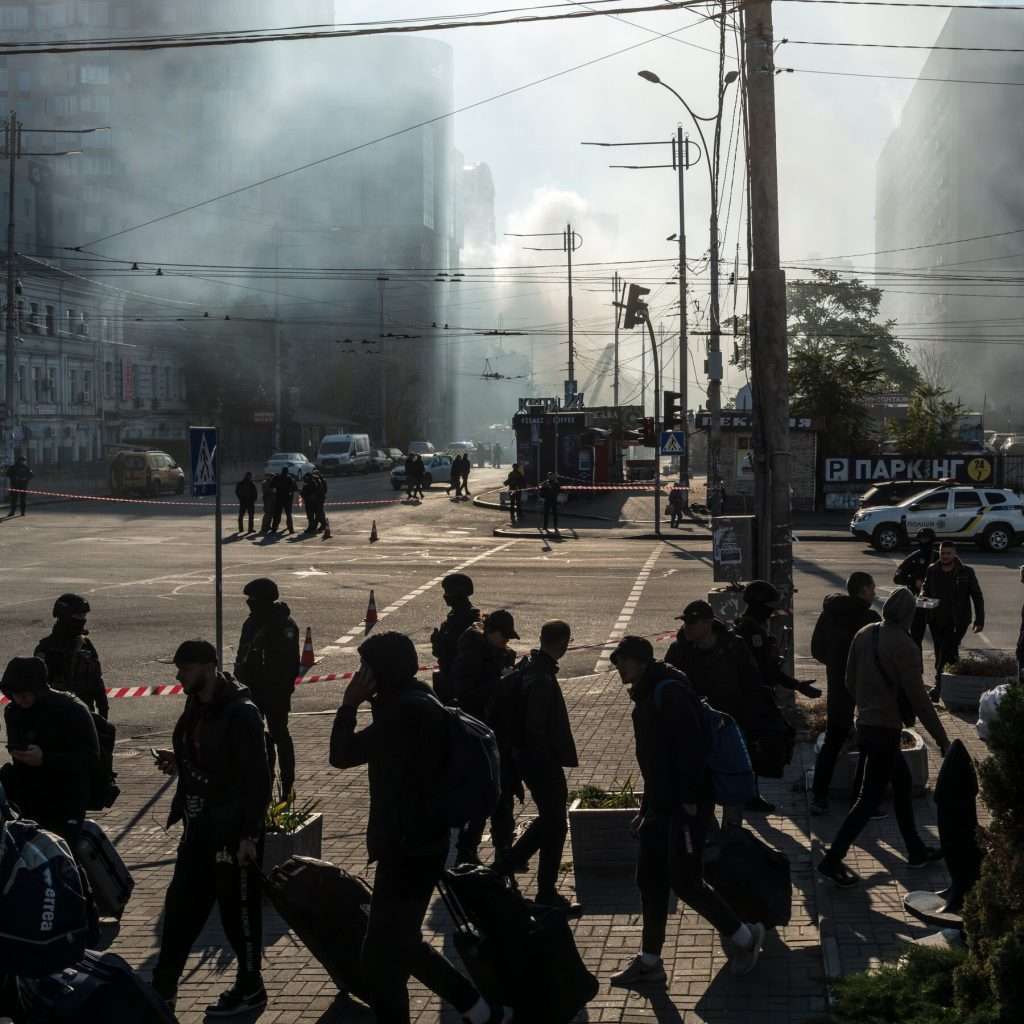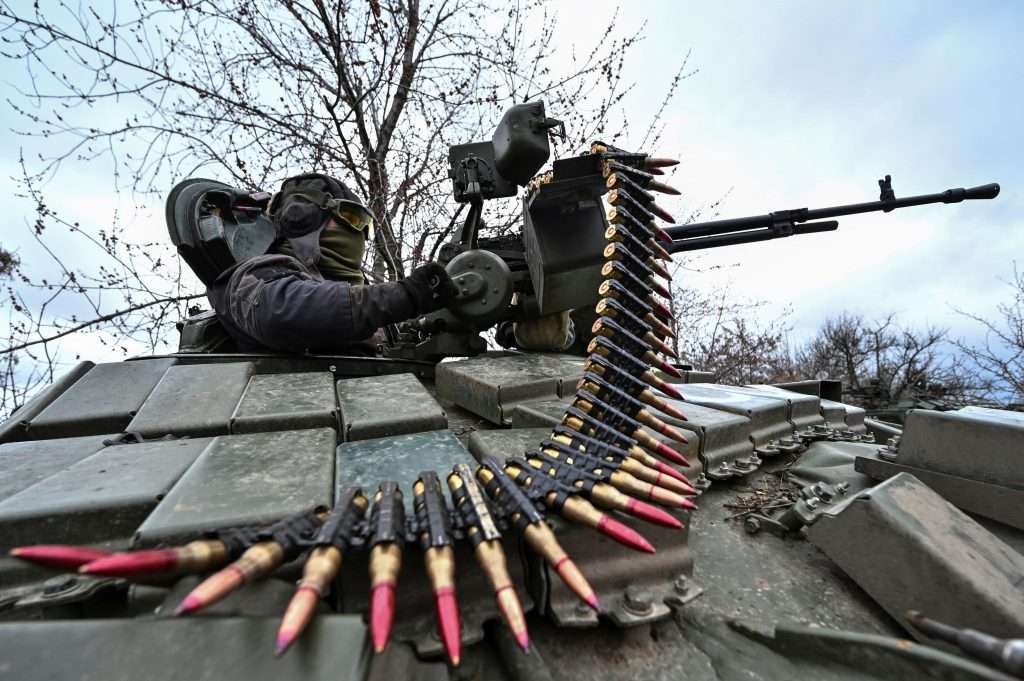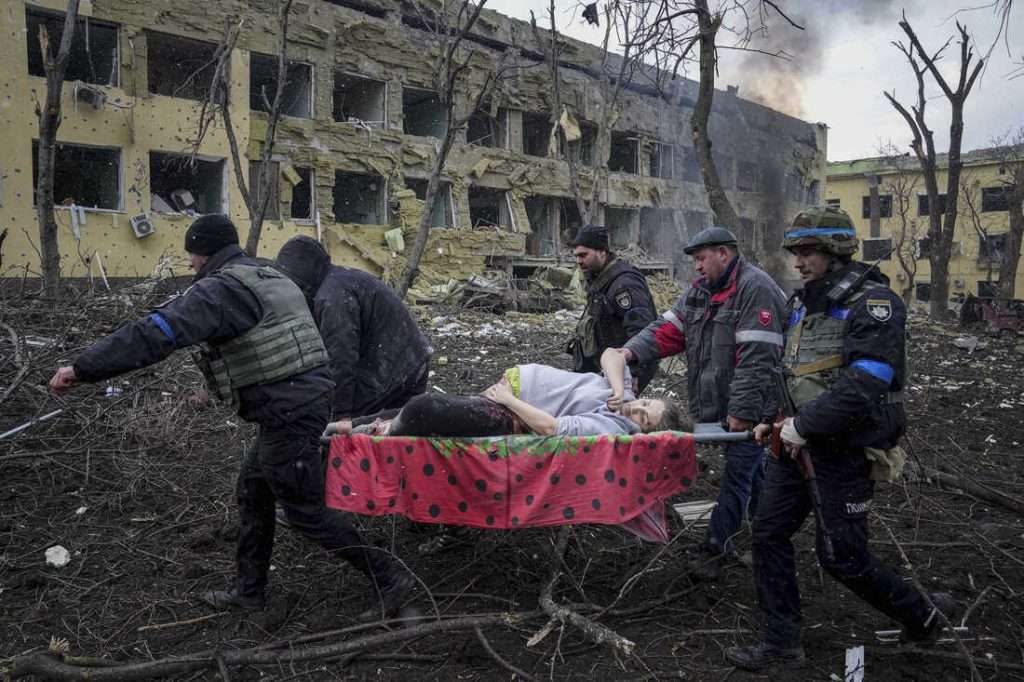On November 24, 2023, Russia claimed to have destroyed 16 Ukrainian drones, including 13 over the Crimean Peninsula and three over the Volgograd region. This comes as Ukraine has been stepping up its attacks on Russian military targets in recent weeks.
A D V E R T I S E M E N T
In a recent development in the ongoing conflict between Russia and Ukraine, Russia has claimed to have successfully intercepted and destroyed a number of Ukrainian drones, including some that were targeting Moscow. This comes as Ukraine has been stepping up its drone attacks against Russian targets in recent weeks.
The Russian Defense Ministry stated that its air defense systems had shot down 16 Ukrainian drones, including 13 over the Crimean peninsula and three over the territory of the Volgograd region. The ministry also claimed that it had intercepted and neutralized a group of Ukrainian drones that were attempting to attack targets in Moscow.
Ukraine has not yet commented on Russia’s claims, but it has acknowledged that it has been using drones to attack Russian targets. In recent weeks, there have been a number of drone attacks on Russian military installations in and around the Crimean peninsula, which was annexed by Russia in 2014.
The use of drones by Ukraine has been increasing in recent months, as the country has been seeking ways to counter Russia’s superior firepower. Drones are relatively cheap and easy to operate, and they can be used to carry out a variety of missions, including reconnaissance, surveillance, and attacks.
The increased use of drones by Ukraine has raised concerns about the potential for further escalation of the conflict. Russia has warned that it will retaliate against any attacks on its territory, and it has threatened to use force to protect its air defense systems.
It remains to be seen whether the use of drones will lead to a wider escalation of the conflict. However, the recent incident involving Ukrainian drones targeting Moscow is a reminder of the potential for the conflict to spiral out of control.
Ukraine's Drone Attacks: A Strategy to Challenge Russia's Air Superiority
Introduction
Despite Russia’s initial air superiority in the ongoing conflict with Ukraine, Ukrainian forces have been employing drone attacks as an effective strategy to challenge Russia’s dominance in the skies. The use of drones has allowed Ukraine to inflict significant damage on Russian military targets, disrupt supply lines, and boost morale among Ukrainian troops and civilians.
Background
Russia’s air force is significantly larger and more sophisticated than Ukraine’s. At the start of the conflict, Russia held a clear advantage in terms of fighter jets, bombers, and helicopters. This allowed Russia to establish air superiority, which gave it the ability to control the airspace over Ukraine and carry out airstrikes with relative impunity.
Ukraine’s Drone Strategy
Ukraine has turned to the use of unmanned aerial vehicles (UAVs), or drones, to counter Russia’s air superiority. Drones offer several advantages over traditional aircraft, including low cost, ease of operation, and the ability to operate in high-risk environments without endangering human pilots.
Ukraine has primarily relied on two types of drones: the Turkish Bayraktar TB2 and the smaller and less expensive Switchblade loitering munitions. The Bayraktar TB2 is a medium-altitude, long-endurance (MALE) drone capable of carrying laser-guided bombs and missiles. The Switchblade is a smaller, portable drone that can be deployed from the ground or from other UAVs.
Impact of Drone Attacks
Ukrainian drone attacks have had a significant impact on the course of the conflict. Drones have been used to destroy Russian tanks, armored vehicles, and artillery positions. They have also been used to disrupt Russian supply lines and communication networks.
In addition to their physical impact, drone attacks have also had a psychological impact on Russian forces. The constant threat of drone strikes has made it more difficult for Russian troops to operate in the open and has forced them to take more precautions to protect themselves.
Challenges and Limitations
Despite their effectiveness, drone attacks also pose challenges for Ukraine. Drones are vulnerable to electronic warfare and anti-air defenses. They also have limited range and endurance, which restricts their use in certain situations.
In addition, Ukraine has a limited supply of drones and is dependent on Western countries for replacements and spare parts.
Conclusion
Ukraine’s use of drones has been a key factor in its ability to resist Russia’s invasion. Drones have allowed Ukraine to challenge Russia’s air superiority and inflict significant damage on Russian forces. While there are challenges and limitations to the use of drones, they have proven to be an effective and versatile weapon in Ukraine’s arsenal.
Russia’s Drone Defense: Under Scrutiny Amidst Ukraine’s Attacks
Introduction
Russia’s drone defense system has come under increasing scrutiny in recent weeks as Ukraine has stepped up its use of drones to attack Russian targets.
Background
Russia has invested heavily in its drone defense capabilities in recent years. The country has developed a number of advanced anti-drone systems, including the Pantsir-S1, the Sosna-2, and the Kupol-M2. These systems are designed to detect, track, and destroy drones using a combination of radar, electronic warfare, and missiles.
Recent Drone Attacks
Ukraine has used drones to carry out a number of attacks against Russian targets in recent weeks. These attacks have included strikes on Russian military bases, ammunition depots, and fuel storage facilities.
In one of the most high-profile attacks, a Ukrainian drone struck a Russian oil refinery in the Black Sea port of Novorossyisk in late July. The attack caused a significant fire at the refinery and disrupted oil production.
Scrutiny of Russia’s Drone Defense
The success of Ukraine’s drone attacks has raised questions about the effectiveness of Russia’s drone defense system. Critics have pointed to the fact that Russia has failed to intercept a number of Ukrainian drones, including some that have targeted sensitive targets such as oil refineries.
Russia has defended its drone defense system, arguing that it is effective and that it has intercepted a large number of Ukrainian drones. However, the Russian military has also acknowledged that it is facing challenges in countering the threat of Ukrainian drones.
Challenges for Russia’s Drone Defense
There are a number of challenges that Russia faces in countering the threat of Ukrainian drones. One challenge is that Ukrainian drones are becoming increasingly sophisticated and difficult to detect. Another challenge is that Ukraine is using a variety of different types of drones, which makes it difficult for Russia to develop a single, effective countermeasure.
Conclusion
The use of drones in the conflict between Russia and Ukraine is likely to continue to increase in the coming months and years. Russia will need to adapt its drone defense system to counter this threat. However, it is unclear whether Russia will be able to develop a system that is effective enough to completely neutralize the threat of Ukrainian drones.
Drone Warfare in the Russia-Ukraine Conflict: A Shifting Landscape
Introduction
The ongoing conflict between Russia and Ukraine has witnessed a significant shift in the role of drones, as they have evolved from mere reconnaissance tools to decisive weapons on the battlefield. Drones, also known as unmanned aerial vehicles (UAVs), have become increasingly sophisticated and affordable, making them attractive options for both sides in the conflict.
Russia’s Initial Drone Superiority
Russia entered the conflict with a more established drone program compared to Ukraine. The Russian military possessed a variety of drones, including large reconnaissance drones like the Forpost and Orlan-10, and attack drones such as the Orion and the Lancet. Russia initially utilized its drone fleet for reconnaissance, surveillance, and target acquisition, providing valuable intelligence to its ground forces.
Ukraine’s Drone Adaptation and Counteroffensive
Despite facing a formidable Russian drone presence, Ukraine has demonstrated remarkable resilience and innovation in adapting its own drone program. Ukraine has acquired and effectively employed Turkish Bayraktar TB2 drones, which have proven to be potent weapons against Russian armored vehicles and artillery positions. The Bayraktar TB2’s capability to carry laser-guided bombs and missiles has enabled Ukraine to inflict significant damage on Russian forces.
Evolution of Drone Warfare Tactics
The conflict has witnessed a continuous evolution of drone warfare tactics. Both Russia and Ukraine have adapted their drone usage to counter each other’s strategies. Russia has deployed electronic warfare systems to disrupt Ukrainian drone signals, while Ukraine has employed smaller, more agile drones to evade Russian air defenses.
Impact of Drone Warfare on the Conflict
The widespread use of drones has had a profound impact on the dynamics of the conflict. Drones have become indispensable tools for both sides, providing them with enhanced reconnaissance capabilities, the ability to strike targets with precision, and the potential to disrupt enemy operations.
Challenges and Considerations
The increasing reliance on drones in warfare raises several challenges and considerations. One concern is the potential for civilian casualties, as drones can inadvertently strike non-combatants. Additionally, the proliferation of drone technology raises questions about the potential for misuse and the future of warfare.
Conclusion
Drone warfare has emerged as a defining feature of the Russia-Ukraine conflict. Drones have proven to be versatile and effective weapons, challenging traditional airpower and transforming the battlefield landscape. As the conflict continues, it is likely that drones will play an even more prominent role in shaping the course of the war.
The Growing Role of Drones in the Russia-Ukraine Conflict: Implications and Concerns
Introduction
Drones, also known as unmanned aerial vehicles (UAVs), have become increasingly prevalent in the Russia-Ukraine conflict, evolving from mere reconnaissance tools to decisive weapons on the battlefield. This surge in drone usage has profound implications for the war’s trajectory and raises critical concerns about civilian casualties, ethical considerations, and the future of warfare.
Russia’s Initial Drone Superiority
Russia entered the conflict with a more established drone program than Ukraine. The Russian military possessed a diverse fleet of drones, including large reconnaissance drones like the Forpost and Orlan-10, and attack drones such as the Orion and the Lancet.
Initially, Russia employed its drones for reconnaissance, surveillance, and target acquisition, providing valuable intelligence to its ground forces. This aerial surveillance capability proved crucial in identifying Ukrainian troop positions and planning attacks.
Ukraine’s Adaptation and Drone Counteroffensive
Despite facing Russia’s initial drone advantage, Ukraine has demonstrated resilience and innovation in adapting its own drone program. A key turning point came with the acquisition of Turkish Bayraktar TB2 drones, which have emerged as potent weapons against Russian armored vehicles and artillery positions.
The Bayraktar TB2’s ability to carry laser-guided bombs and missiles has enabled Ukraine to inflict significant damage on Russian forces, striking at supply lines, ammunition depots, and even warships.
Evolving Drone Warfare Tactics
The conflict has witnessed a continuous evolution of drone warfare tactics, with both sides adapting their strategies to counter each other’s moves. Russia has deployed electronic warfare systems to disrupt Ukrainian drone signals, while Ukraine has employed smaller, more agile drones to evade Russian air defenses.
Impact of Drone Warfare on the Conflict
The widespread use of drones has fundamentally altered the dynamics of the conflict. Drones have become indispensable tools, providing both sides with enhanced reconnaissance capabilities, the ability to strike targets with precision, and the potential to disrupt enemy operations.
Drones have enabled Ukraine to target Russian forces behind enemy lines, disrupt supply chains, and even attack strategic targets deep within Russian territory. This capability has helped Ukraine to counter Russia’s superior firepower and slow its advances.
Challenges and Concerns
The growing role of drones in warfare raises several challenges and concerns. One major concern is the potential for civilian casualties, as drones can inadvertently strike non-combatants. The conflict has already seen instances of civilian casualties from drone attacks, highlighting the need for more precise targeting measures.
Conclusion
Drones have emerged as a defining feature of the Russia-Ukraine conflict, transforming the battlefield landscape. Their ability to provide reconnaissance, deliver precision strikes, and disrupt enemy operations has significantly impacted the war’s trajectory.
As the conflict continues, it is likely that drones will play an even more prominent role, shaping the course of the war and influencing future warfare tactics. However, the ethical considerations and potential for civilian casualties must be carefully addressed to ensure responsible and ethical use of drone technology in warfare.
A D V E R T I S E M E N T







